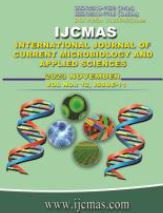


 National Academy of Agricultural Sciences (NAAS)
National Academy of Agricultural Sciences (NAAS)

|
PRINT ISSN : 2319-7692
Online ISSN : 2319-7706 Issues : 12 per year Publisher : Excellent Publishers Email : editorijcmas@gmail.com / submit@ijcmas.com Editor-in-chief: Dr.M.Prakash Index Copernicus ICV 2018: 95.39 NAAS RATING 2020: 5.38 |
Worm eggs are revealed to be colorless upon direct inspection, making them challenging to observe under a microscope. An easy technique for studying worm eggs is to utilize Eosin 2%, which is typically used in medical research and diagnostics. Eosin has some drawbacks, including a high price tag and environmentally hazardous ingredients. Consider using the skin of dragon fruits as a source of dye. The red pigment betacyanin gives dragon fruit skin its color. The intention was to determine if intestinal nematode worm egg coloration could be substituted with dragon fruit peel (Hylocereus polyrhizus). The red dragon fruit skin was extracted with ethanol as a solvent and 2% eosin as a reference to create the dye for this experimental study. Using ethanol solvent to dye feces preparations from dragon fruit peel extract demonstrates the possibility of doing so. Extract from the peel of dragon fruit shows promise as a coloring agent. As a result, 2% eosin can be replaced with dragon fruit peel extract (Hylocereus polyrhizus) when studying worm eggs.
 |
 |
 |
 |
 |